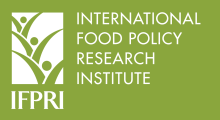Resource information
We estimate the impact of improved market access on household well-being and nutrition using a quasi-experimental setting in Ethiopia. We find that households in remote areas consume substantially less than households nearer to markets, they are more food insecure, and their school enrollment rates are lower. Although their diets are also less diverse, we find no significant differences in anthropometric measures. Part of these welfare differences can be attributed to lower household agricultural production in remote areas. But agricultural production differences alone do not account for all of the differences in household consumption levels for remote households. An additional contributing factor is the deteriorating terms of trade for remote households that negatively affects both the size of the agricultural surplus that these households market and the quantity of food items that they purchase. Reducing transaction costs associated with poor rural infrastructure can pay off important dividends as it can facilitate households’ abilities to transform marketed surpluses into consumption goods and into healthier, more diverse diets.


